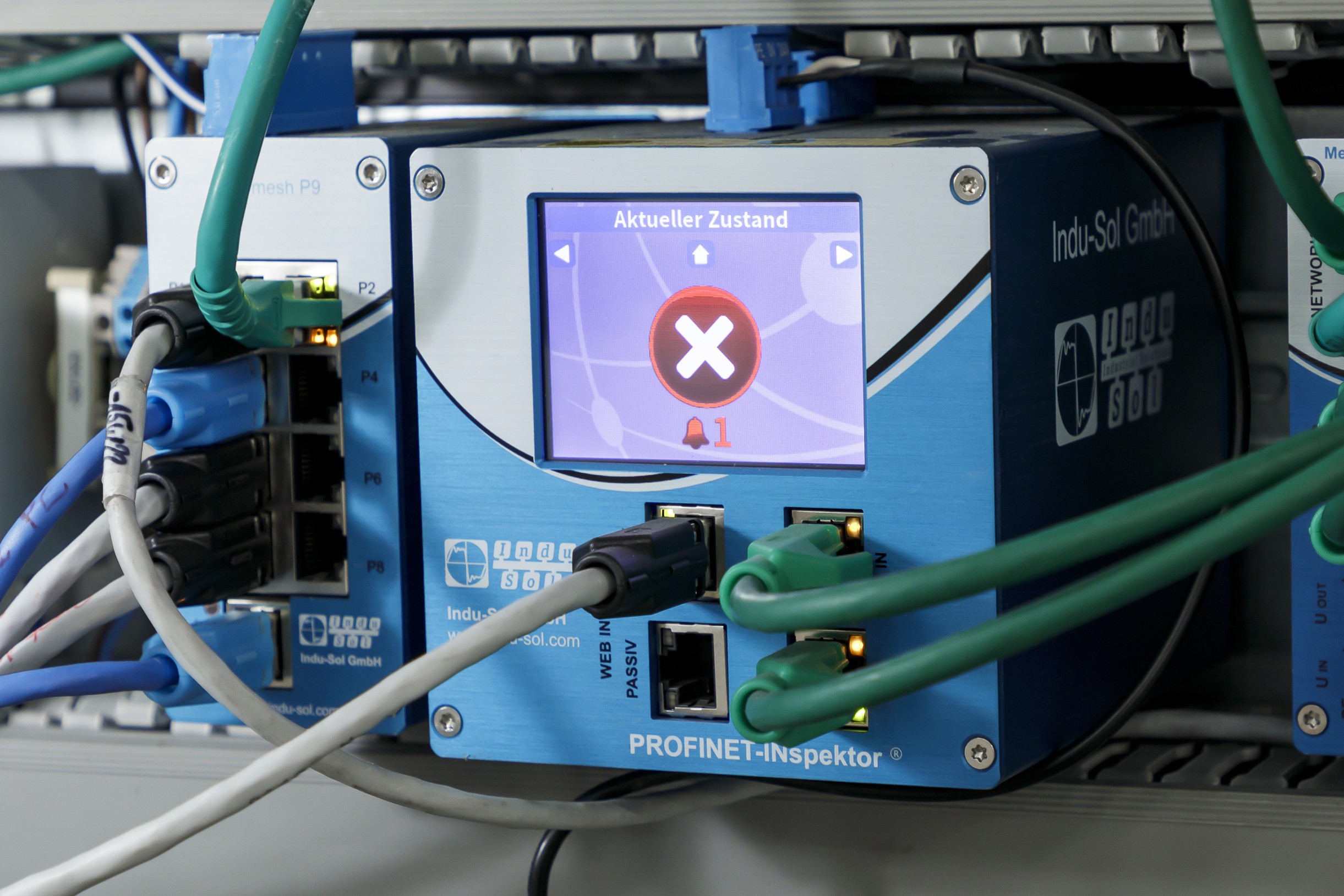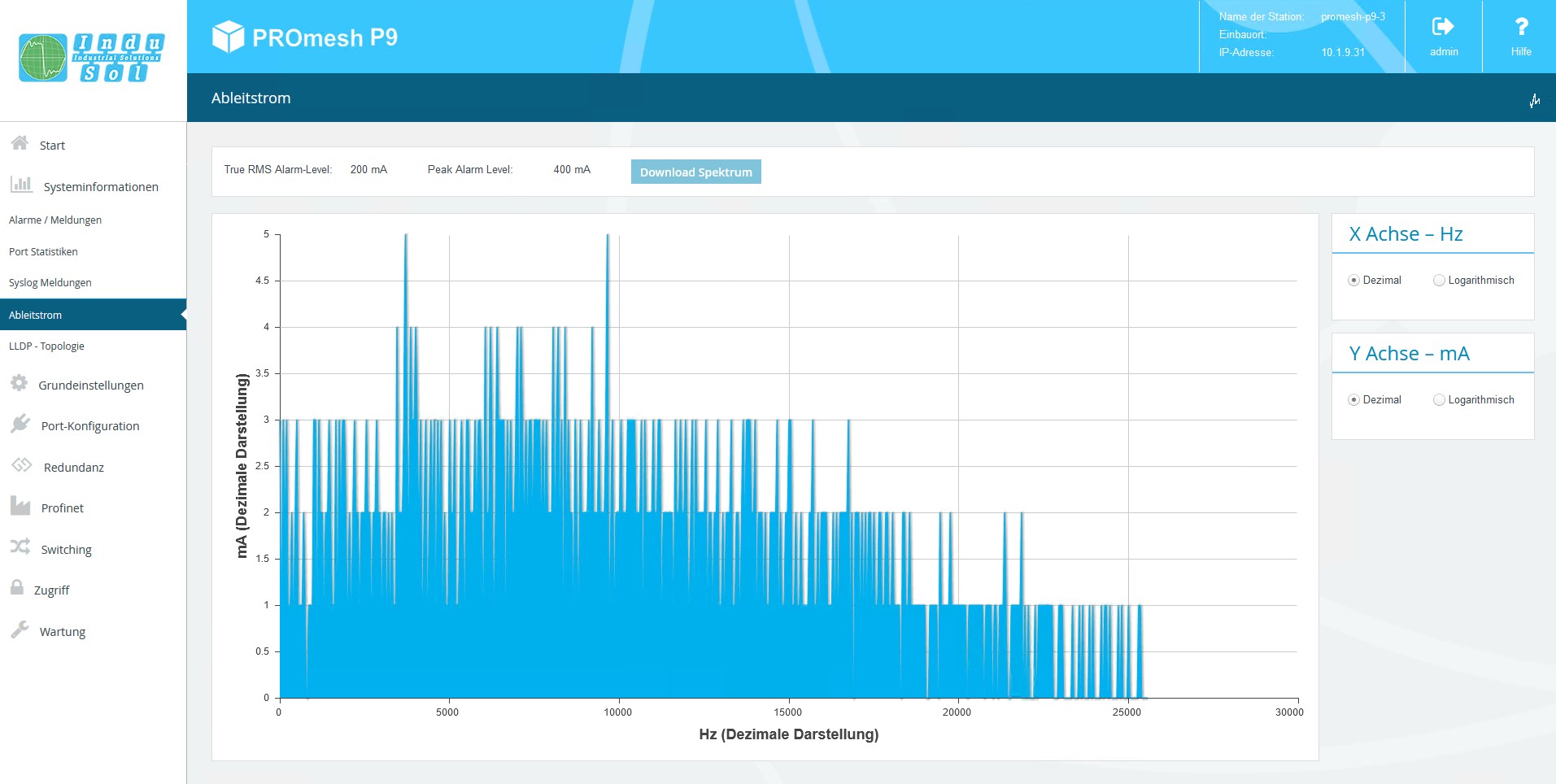
Time is an essential factor in automated production. In order to manufacture products economically, plants must function reliably on a daily basis. Because every standstill costs money. If errors occur, the first thing to focus on is the mechanics and whether sensors, actuators and control technology are doing their job. However, the grid is still not seen in many places as a relevant part of a load-bearing facility. In the process, it can certainly become a “troublemaker” and cause errors that cannot be easily reproduced. The employees of the maintenance team at Imperial-Werke in Bünde can confirm this from their everyday work.

© Miele
Gas and ceramic hobs, (pressure) steam stoves and warming drawers are manufactured at Miele’s Bünde plant. Around 700 employees work at the site, and approximately 500,000 units leave the plant every year. The operating technology team ensures smooth and safe production on site. However, sporadic and unclear power failures can still cause downtime in the production line for steam cookers. The maintenance staff wanted to get to the bottom of these.
Create transparency
For cooking chamber production, stamped stainless steel sheets are fed in, which are converted into cooking chambers for steam cookers via various forming and welding processes. In the automated system, individual robot cells are interlinked, and the blanks are passed from station to station. Approximately every two minutes, a new cooking chamber leaves this production line for final assembly. Jan Rüter, head of operations technology at Miele’s Bünde plant, outlines the situation: “We kept having sporadic failures and couldn’t figure out what was causing them. Because we suspected not individual machines, but the network itself, colleagues from our plant in Bielefeld lent us their Profinet inspector. That was a first important step towards finding the cause!”
The evaluation of this data confirmed that the fault lies in the communication network, or more precisely in the EMC. Promesh P9 and P20 industrial Ethernet switches were used to keep a permanent eye on equipotential bonding. Its leakage current monitoring detects the exact time, frequency (sampling rate of 25 KHz) and intensity (measuring range from 0 to 10 A) of EMC couplings in data lines. In addition, there was another major advantage: the switches are managed and thus allow access to the communication data. This is the basis for the permanent network monitoring that Promesh switches provide. This helps to track down sporadic non-reproducible events and their causes and thus keep an eye on network performance.
If the data traffic in the network exceeds the performance limit of a switch, data loss (discards) occurs. These are displayed as port statistics on an integrated web interface together with errors, error telegrams netload/ms. “Today we can say what the causes of our problems are,” explains Wilhelm Kröger, team leader for machine and plant technology at the Bünde plant. “Because we use a lot of welding applications, we have large interference currents in phases, and they ultimately affect network communications.”

© Indu-Sol
From IT to OT switch
In the past, classic IT switches were installed at Miele’s Bünde plant. These were managed by the IT department. This brought several disadvantages at once: The employees in the maintenance department had no access to the switches. In addition, these switches do not meet OT requirements for Profinet certification, netload class (robustness to the network traffic being processed), and conformance class (scope of Profinet functionality). At the same time, these switches do not offer diagnostic functions, such as leakage current measurement, which would be useful for operating an OT network.
However, before new switches are deployed in a larger enterprise, it’s not just maintenance that needs to be convinced by the hardware. The support responsibilities of individual production areas also had to be rethought together with IT. “There are, of course, numerous requirements that such a device must meet before we can use it. So it was a relief that we could first borrow a switch from Indu-Sol and test it extensively.”

© Indu-Sol
These tests very quickly showed that the causes of network faults, which were still unknown at the time, could be made transparent quickly and simply. To enable the final deployment, the network experts also developed a firmware add-on to meet Miele’s IT security requirements. Horst Voigt, Key Account Manager at Indu-Sol: “It is important to us to be able to offer our customers an ideal solution. If we are as well involved in the decision-making process as we are at Miele, such individual adaptations can be realized without complications.”
However, the manufacturer’s maintenance staff also found the training in advance helpful. They are essentially electricians, not network experts. Therefore, Indu-Sol not only instructed the maintenance team in the use of the switches, but also provided all essential content on the subject of data networks. Mr. Kröger recalls: “What are the technical terms? What difficulties can arise? How do they manifest themselves? How can they be remedied? We got an insight into the ‘secret machinations’ of the network, so to speak, in a short time. That was very helpful. But it’s just as useful that we get answers and support from the network experts when we have specific questions, which usually only arise in our day-to-day work.”
Creating transparency is the first step towards a solution
Only those who know their problem can solve it. At the same time, just because you’re aware of its causes doesn’t mean a problem is solved. The manufacturer’s welding applications require high-frequency ignition. This generates electromagnetic interference radiation, which also affects data lines. This results in data communication problems that disrupt the flow of individual manufacturing steps or cause them to be performed incorrectly. For example, data packets are lost, leading to abnormal plant behavior or, in the worst case, downtime.
Rüter explains, “It is now our turn to replace plasma welding with a process that offers the same speeds and quality while generating fewer leakage currents. Of course, this is not a trivial task.” The example shows: not all sources of error could simply be eliminated or mitigated. Therefore, the maintenance staff is also interested in: What are the experiences of others at this point and how can the causes of problems in network communication be solved? “Here, we would also be pleased to exchange information with maintenance staff from other companies on their experiences and approaches to solutions,” suggests Rüter.

© Miele
Simple integration
Once the decision was made to use new switches, the next step was of course to integrate them. Overall, the integration of the Promesh switches was very simple. Dirk Blöcker, operating technician at Miele in Bünde, Germany, remembers: “Because we did not install all our switches directly in the plant, but in a remote control cabinet, we only had to replace them at one point. Together with Indu-Sol, we prepared the exchange well. So it only took a good half day until the plant could work productively again.”
The manufacturer of built-in kitchen appliances was pleased with the transparency they were able to bring to their network communications with the new switches. But the maintenance employees are also grateful for what they have learned along the way. Some brought a lot of prior knowledge with them, yet all learned a lot of helpful information about network communication in a short time through the training and the exchange with Indu-Sol. This deeper understanding also ultimately ensures fail-safe production today, with high-quality products at the end of the line. Blöcker sums up: “Our practical experience shows that the boundaries between machine and IT networks are becoming increasingly blurred. Therefore, in the future it will be important that maintenance staff understand more and more about network communication and also have access to the production network. Ultimately, the right switch is the key to success here.”
